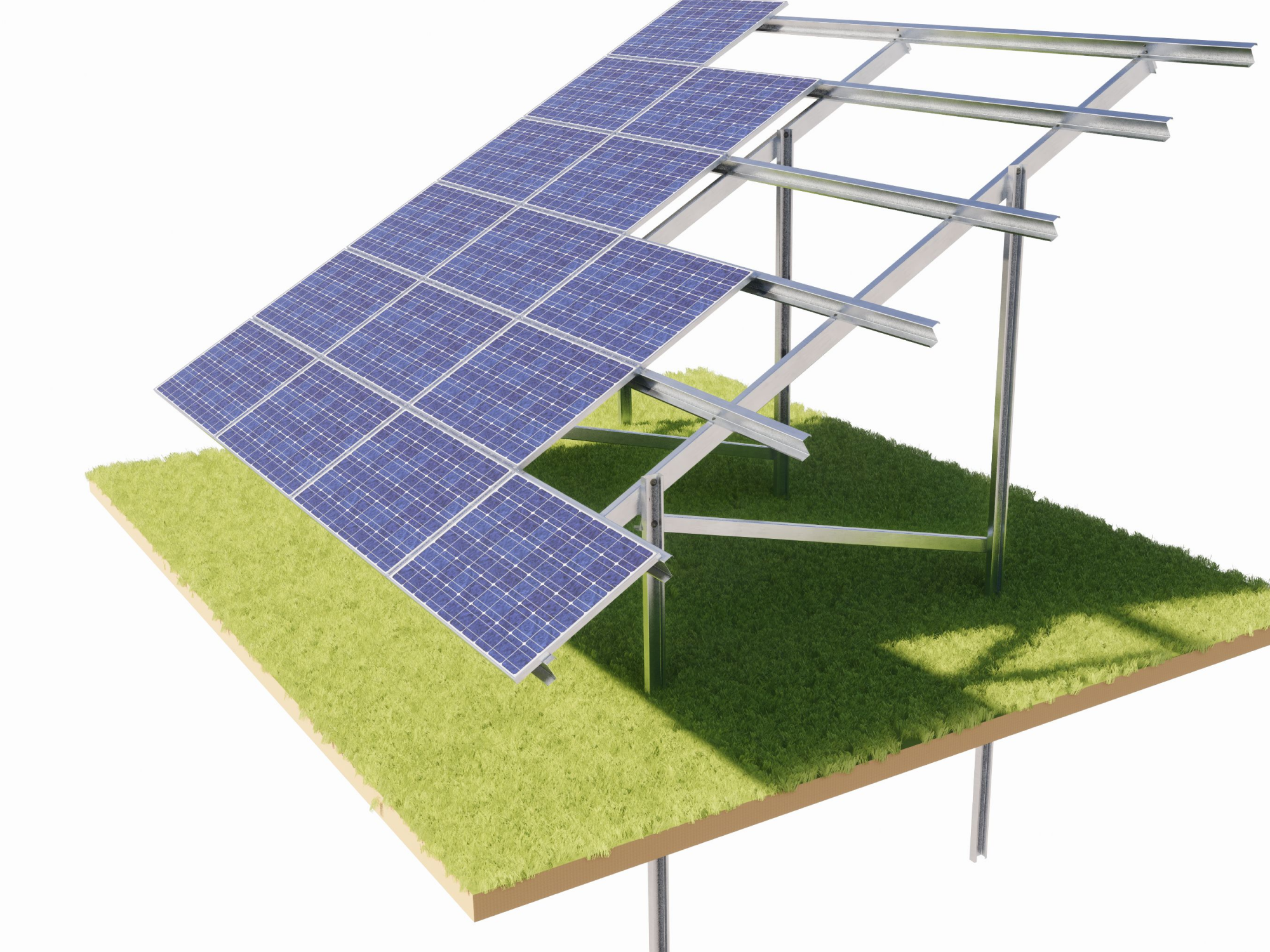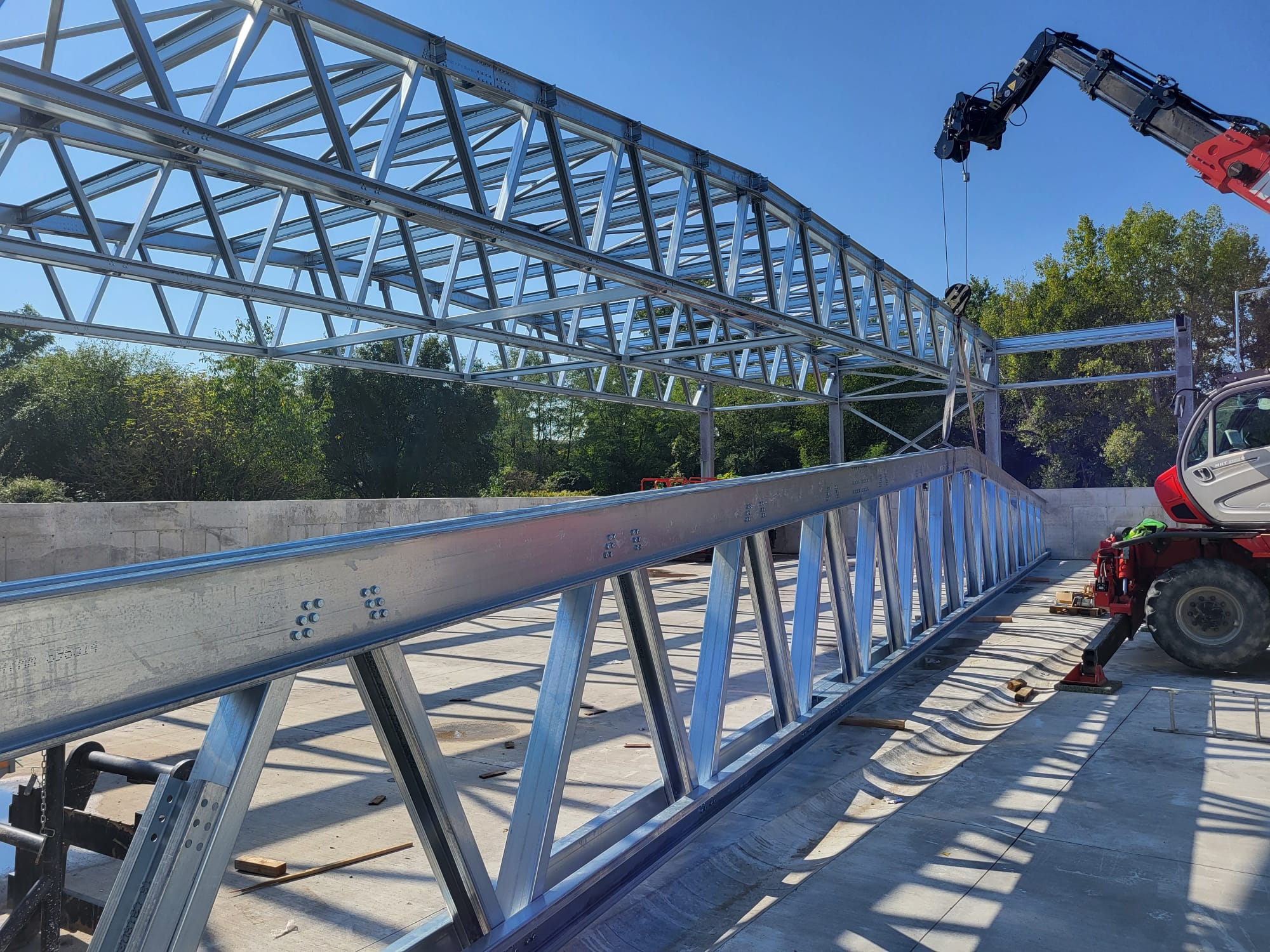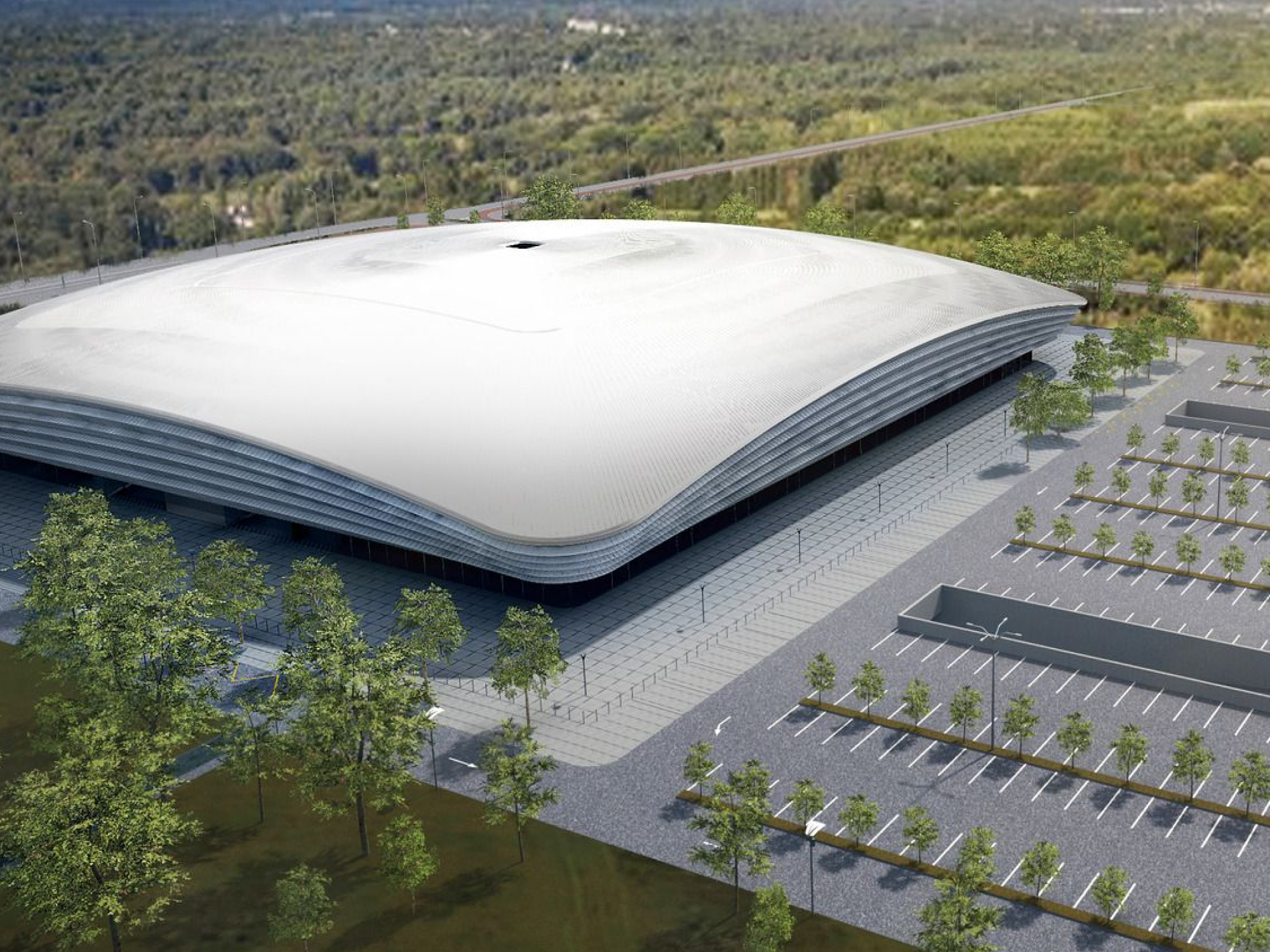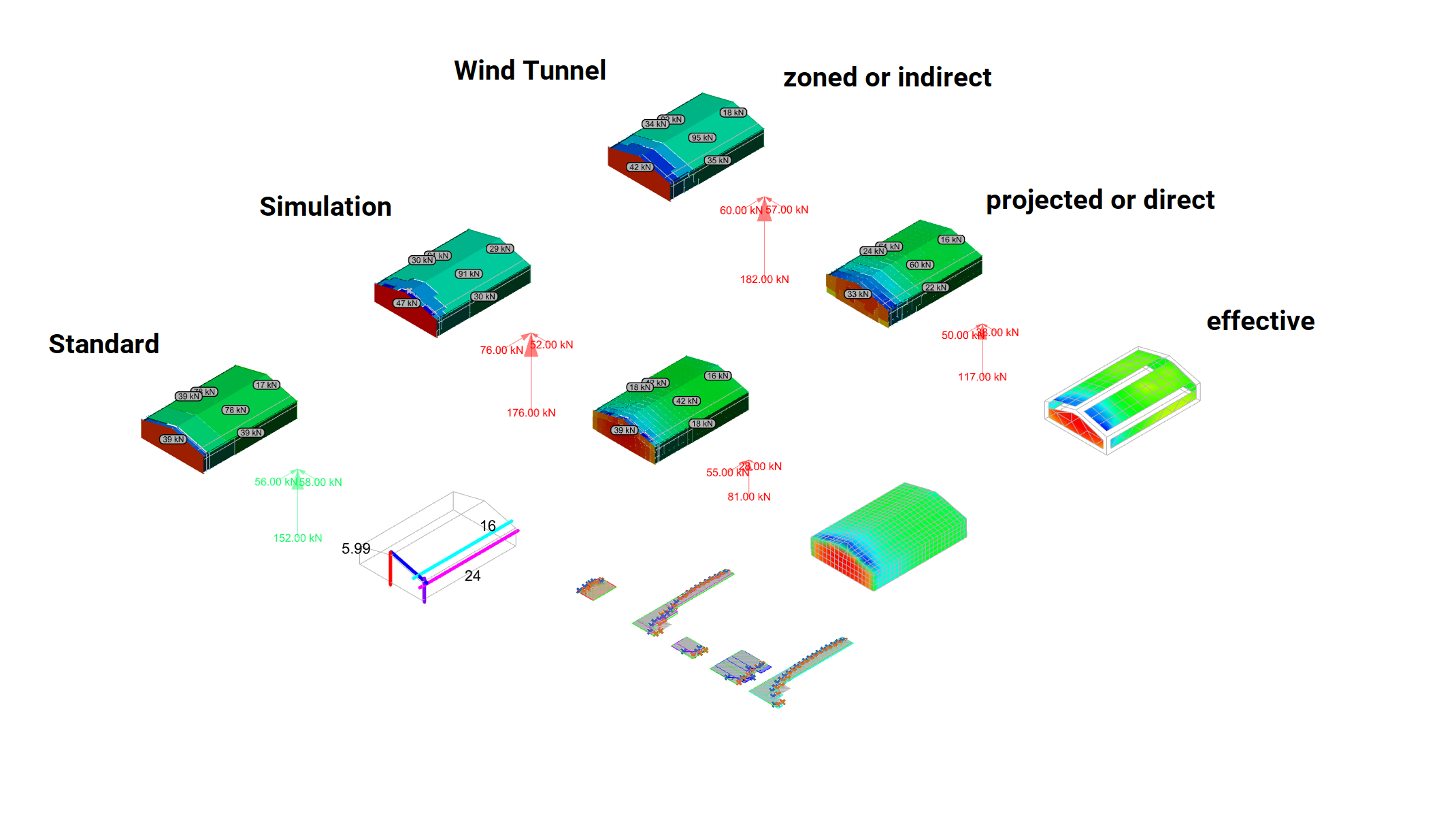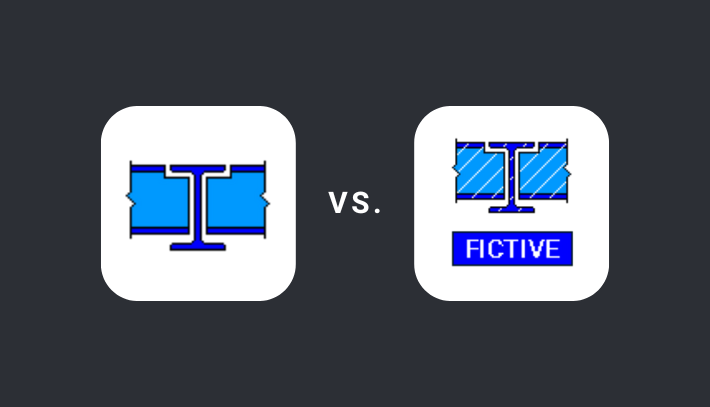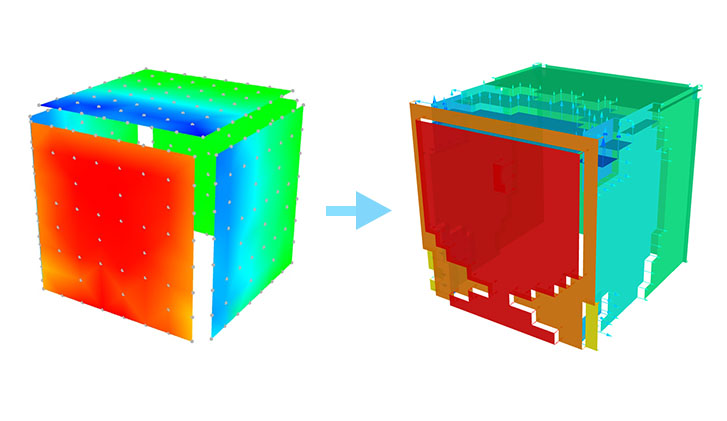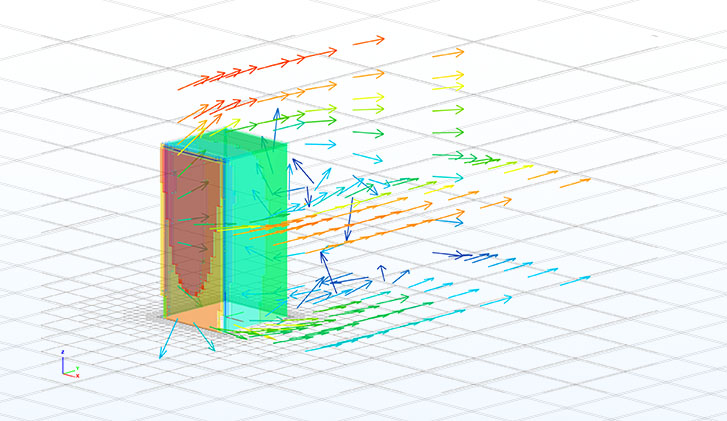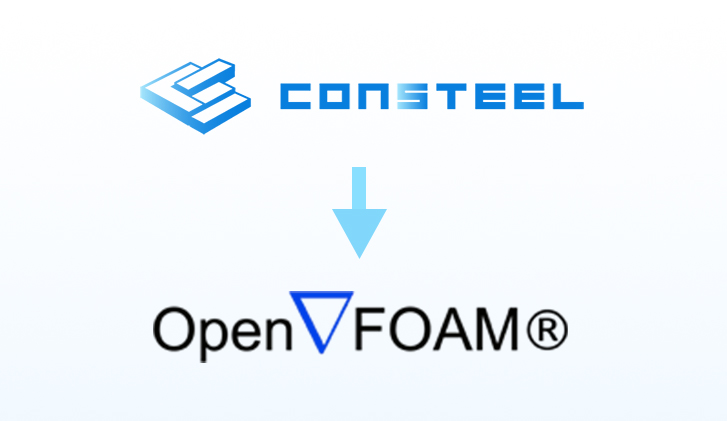Analysefunktionen für präzise und zuverlässige Ergebnisse
Consteel macht die Tragwerksplanung wieder spannend, besonders bei der Lösung von Stabilitätsproblemen.
Keine Kreditkarte erforderlich.
Analysefunktionen
Wahre Analyse globaler Stahlkonstruktionen – das Balkenelement mit 7 Freiheitsgraden
Consteel ist die einzige Software für die Tragwerksplanung, die das spezielle Balkenelement mit 7 Freiheitsgraden (7DOF) für alle Arten der globalen Strukturanalyse verwendet. Das 7DOF-Element wurde speziell für dünnwandige Bauteile entwickelt, bei denen die Wölbung des Querschnitts eine hohe Bedeutung für das Verhalten hat. Die Modellierung erfolgt immer in 3D, und verschiedene Analysetypen, einschließlich spezieller und einzigartiger Verfahren (wie globale Knickanalyse, Analyse der Stabilitätsgefährdung oder Imperfektionsanalyse), wurden entwickelt, um das wahre Verhalten Ihrer Struktur zu verstehen und sie optimal zu gestalten.
Vollständige Zweitordnungsanalyse
Bei einem räumlich verformten schlanken Stahlstabsystem verursachen die aufgebrachten Lasten Sekundäreffekte, die weit komplexer sind als der bekannte P-δ-Effekt. Mit dem 7DOF-Finite-Element von Consteel können die Zweitordnungs-Effekte, die durch Lasten auf jeder räumlichen Verformungskomponente verursacht werden, berechnet werden. Infolgedessen können die Auswirkungen von jeglichen Imperfektionen, Exzentrizitäten von Lasten, Stützen oder Verbindungen auf Verformungen und innere Kräfte in die Bemessung einbezogen werden.
Globale Knickanalyse
Die globale Knickanalyse dient der automatischen Stabilitätsbemessung von Consteel, basierend auf der Allgemeinen Methode gemäß EN 1993-1-1. Sie ist eine lineare Eigenwertanalyse, die am gesamten Strukturmodell durchgeführt wird und die elastischen kritischen Lasten sowie die dazugehörigen Knickformen berechnet, die die relevanten Stabilitätsverlustmoden anzeigen. Alle globalen Knickmoden (Biegung, Torsion, Biegedrillknicken und deren Kombinationen) werden berechnet, visualisiert und können für die automatische Bemessung verwendet werden.
Analyse der Stabilitätsgefährdung
Die globale, modellbasierte Knickanalyse liefert eine Vielzahl unterschiedlicher, aber dennoch relevanter Knickformen. Für die Bemessung einzelner Bauteile ist es entscheidend, die kritischen Knickformen und die damit verbundenen Schlankheitswerte zu identifizieren. Die Analyse der Stabilitätsgefährdung ist ein effizientes Werkzeug, das diese wichtigen Informationen liefert. Sie ermittelt die kritischen Bauteile basierend auf den Verformungsenergien der Knickmoden. Dieses innovative Verfahren – entwickelt von Consteel – erspart das manuelle Definieren von Stabilitätsbemessungsparametern (Knicklängen, ungestützte Längen), während es dennoch die tatsächliche strukturelle Konfiguration genau widerspiegelt.
Imperfektionssensitivität
Die direkte Berücksichtigung von Strukturimperfektionen ist oft von den Normen gefordert, während sie in anderen Fällen eine überzeugende alternative Lösung für die Stabilitätsbemessung darstellt. In Consteel kann jede Art von globaler Imperfektion einfach definiert werden, und ihre Auswirkungen können dank des einzigartigen 7DOF-Finite-Elemente-Modells und der vollständigen Analyse der zweiten Ordnung präzise berechnet werden. Die korrekte Definition der Amplitude von Imperfektionen ist entscheidend, da sie weder explizit in der Norm geregelt noch einfach zu bestimmen ist. Consteel bietet eine einzigartige Entwicklung, um dieses Problem zu lösen. Die Gesamtimperfektionsmethode bestimmt automatisch die Imperfektionsamplituden unter Verwendung von Standard-Knick- und Biegedrillknickkurven. Eine Analyse der zweiten Ordnung, die mit diesen Imperfektionen durchgeführt wird, liefert Ergebnisse, die vollständig mit der Methode der Knickreduktionsfaktoren übereinstimmen.
Exakte Analyse der Eckbereiche von durchlaufenden Rahmenelementen
Eckzonen zeigen in der Regel ein deutlich anderes Verhalten als die verbundenen Trägerelemente. Da diese Zonen sehr kurz sind, wird das Verhalten hauptsächlich durch den Schubeffekt beeinflusst. In Consteel werden die Eckbereiche von Rahmenelementen semi-automatisch erkannt, und während der Analyse und Bemessung werden spezifische Methoden angewendet, die die kinematischen Einschränkungen zwischen den 7. Freiheitsgraden der benachbarten Elemente (Wölbungsübertragung) gemäß der gewählten Eckbereichs-Topologie berücksichtigen.
Exakte Analyse von strukturellen Exzentrizitäten
In Consteel kann die Struktur auch unter Berücksichtigung der Exzentrizitäten wie in der Realität modelliert werden. Deformationen und innere Kräfte, die durch die Exzentrizitäten von Lasten, Stützen oder Verbindungen entstehen, werden vollständig berücksichtigt. Nach der richtigen Modellierung sind keine weiteren Schritte nötig, um die Auswirkungen in der Bemessung einzubeziehen.
Filterung von Lastkombinationen
Bei fast allen Tragwerksprojekten stellt die große Anzahl der in den Normen definierten Lastfälle und -kombinationen eine große Herausforderung dar. Während viele dieser Kombinationen weder relevant noch kritisch für die Bemessung sind, ist es oft unklar, welche davon sicher vernachlässigt werden können. Dies führt dazu, dass der Optimierungsprozess mit übermäßigen und unnötigen Berechnungen belastet wird.
Für dieses Problem bietet die Filterfunktion für Lastkombinationen eine leistungsstarke Lösung. Durch die Nutzung der Art der Lastkombinationen und früherer Analyse- und Bemessungsergebnisse können Benutzer eine Vielzahl von Filterregeln definieren, um nur die relevantesten Fälle zu identifizieren. Die verfeinerte Liste der Lastkombinationen kann dann für verschiedene Stadien des Optimierungsprozesses gespeichert werden, wodurch der Entwurfsablauf rationalisiert und die Berechnungszeit erheblich reduziert wird.
Immersive Visualisierung des tatsächlichen Strukturverhaltens
Die Einzigartigkeit von Consteel liegt in der Fähigkeit, das reale Strukturverhalten so genau wie möglich zu modellieren und auf dieser Grundlage Automatisierungs- und einzigartige Entwurfsverfahren zu entwickeln.
Ein entscheidendes Element dieses Ansatzes ist die immersive Visualisierung, die eine realistische Darstellung der Verformungen ermöglicht, die mit dem tatsächlichen Strukturverhalten verbunden sind – ganz gleich, ob sie aus aufgebrachten Lasten oder Knickformen resultieren.
Diese Visualisierung geht über herkömmliche Verschiebungskomponenten hinaus, indem sie auch Verformungen und andere lokale Verformungen von Strukturelementen einbezieht, wodurch die Darstellung glatter und realistischer wird. Die Struktur wird fast so dargestellt, als ob die Balken und Platten mit Schalenmodellen analysiert würden.
Warum ist das wichtig?
Weil eine visuell ansprechende und intuitive Darstellung das Strukturverhalten weitaus effektiver vermittelt als selbst mehrere Seiten mit Berechnungen oder Tabellen.
Wie kann Consteel Ihre Arbeit verbessern?
SIMPLIFY YOUR DESIGN PROCESS


